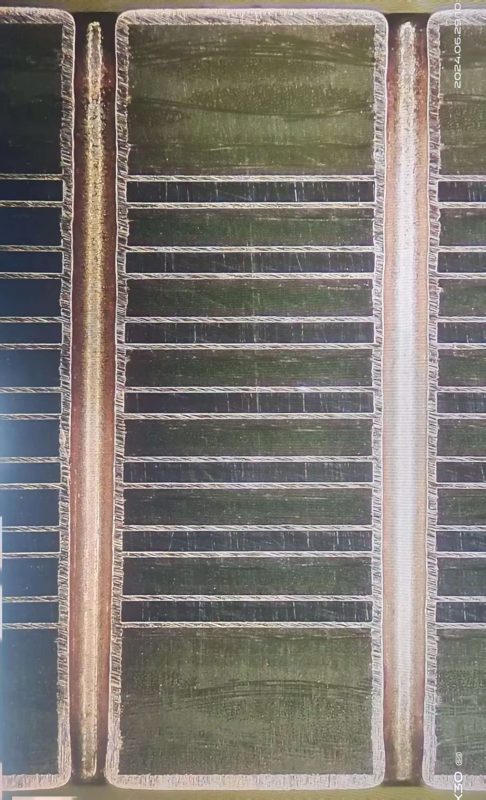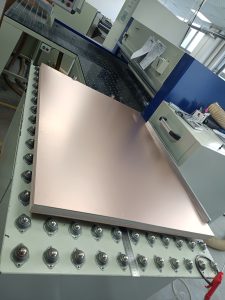 Well-known PCB supplier
Well-known PCB supplier
+86 13603063656

FR4 is a widely used material in PCB manufacturing due to its strong mechanical properties and excellent electrical insulation. One of the most important properties of FR4 is its dielectric strength, which significantly influences the overall performance and reliability of the circuit board. Dielectric strength refers to a material’s ability to withstand high voltage without undergoing dielectric breakdown. This article will explore FR4 dielectric strength, dielectric constant, and how these properties affect PCB design, particularly at high frequencies.

FR4 Dielectric
The FR4 dielectric strength typically ranges between 800V/mil and 1500V/mil, depending on factors such as resin type, thickness, and fiber weaving. This is a key performance parameter, as it determines how well the PCB can handle high-voltage conditions before the material fails. Dielectric strength is measured by placing the material between electrodes and applying voltage incrementally until breakdown occurs.
FR4’s high dielectric strength makes it an ideal choice for applications where electrical insulation is crucial. It helps in isolating different electrical components on the circuit board, preventing short circuits and protecting sensitive devices from voltage spikes. However, due to the increased demand for high-performance boards, especially in multilayer designs, FR4 dielectric strength must be considered in relation to other material properties to ensure optimal circuit board performance.
Jerico Multilayer PCB ensures that all their PCBs, including those using FR4, meet stringent dielectric strength standards for demanding applications. By leveraging advanced manufacturing processes, Jerico provides high-quality PCBs suitable for complex and high-voltage environments.
The dielectric constant (Dk) of FR4 is another critical property that influences its performance in electronic circuits. The dielectric constant of FR4 typically ranges between 4.0 and 6.0, which is relatively high compared to other materials. A higher dielectric constant allows FR4 to effectively isolate signal traces and reduce interference between them, ensuring clear signal transmission in the circuit.
Furthermore, the dielectric constant of FR4 contributes to the capacitance of the components on the PCB. A higher dielectric constant increases the capacitance value of capacitors, which can enhance circuit performance by providing better energy storage. However, at high frequencies, the dielectric constant of FR4 tends to decrease, which can affect the propagation of signals.
As the frequency increases, typically above 5 GHz, the FR4 dielectric constant drops, with the value often approaching 4.0 from its typical value of 4.7. This phenomenon, known as dielectric dispersion, causes signals to propagate at different speeds depending on their frequency components, which may result in signal distortion. For PCBs used in high-frequency applications, such as RF circuits or high-speed digital systems, this characteristic must be taken into account during the design phase.
Temperature has a significant impact on both dielectric strength and dielectric constant. As temperature rises, the molecular interactions within the material weaken, leading to decreased polarization. This results in a lower dielectric constant at higher temperatures. The reduced dielectric constant causes an increase in signal speed, but it can also lead to signal distortion due to inconsistent propagation of high-frequency components.
Moreover, as temperature increases, the material’s breakdown voltage decreases, reducing its dielectric strength. This is important for ensuring the PCB can maintain its integrity under varying operating conditions. As a result, temperature changes must be considered when designing PCBs that will operate in environments with fluctuating temperatures.
Jerico Multilayer PCB takes into account the temperature sensitivity of FR4 when designing their products. By optimizing the material properties and incorporating advanced design techniques, Jerico ensures that their PCBs can withstand harsh environmental conditions without compromising performance.
In high-frequency applications, the dielectric strength and constant of FR4 play a crucial role in signal integrity. As mentioned earlier, the dielectric constant decreases with frequency, which increases the signal propagation speed. While this may seem beneficial at first, it can cause phase differences between the different frequency components of a signal, leading to signal distortion and loss of data integrity.
Additionally, the increase in signal loss factor (Df) at higher frequencies can further degrade signal strength. At high frequencies, FR4’s loss factor increases significantly, causing the signal to weaken over long distances. This effect is particularly noticeable in high-speed digital circuits, where the signal attenuation becomes more pronounced as frequency increases.
For critical applications, such as high-speed data transmission or RF communications, it may be necessary to choose materials with lower dielectric constants and lower loss factors, such as PTFE or ceramics, to minimize signal degradation.
When designing high frequency PCBs or high-voltage PCBs applications, selecting the right materials is crucial to ensure optimal performance. FR4 is often sufficient for most general-purpose PCB applications, but for high-performance circuits, materials with lower dielectric constants and lower loss factors may be required. For instance, Jerico Multilayer PCB often uses alternative materials for their high-frequency designs to ensure low signal loss and accurate signal transmission, maintaining the integrity of the circuit.
In summary, while FR4 dielectric strength and constant make it a versatile and reliable choice for most PCB applications, designers must consider its frequency-dependent properties and temperature sensitivity when designing for high-speed or high-voltage applications. The right material selection can significantly improve the performance of the circuit and ensure long-term reliability.
Connect to a Jerico Multilayer PCB engineer to support your project!
Request A Quote